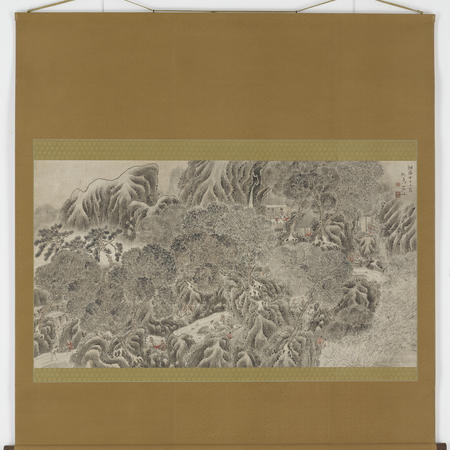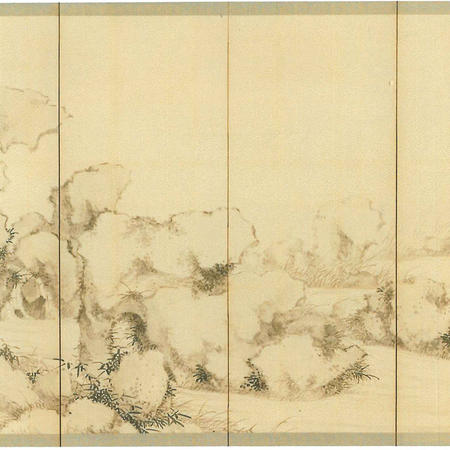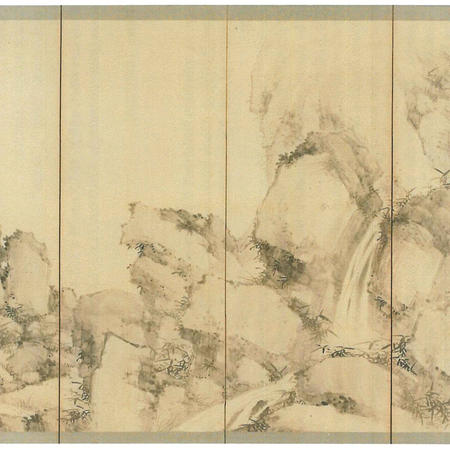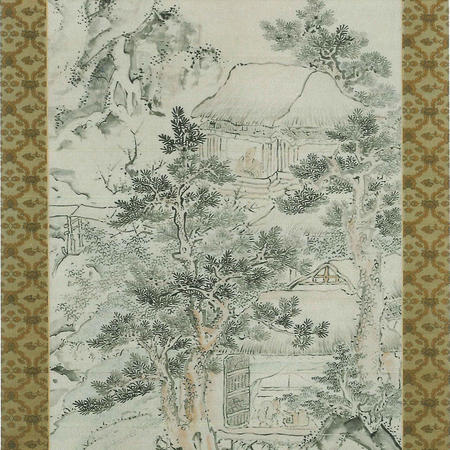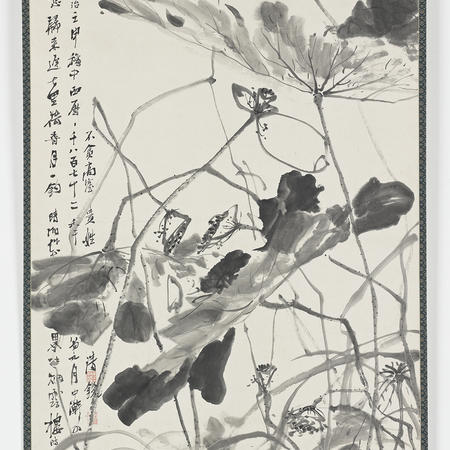GALLERY 2600 | EAST ASIAN ART
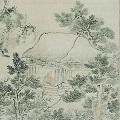 “Nanga” literally translates as “Southern painting.” It is the Japanese rendering of the original Chinese term used to refer to intentionally unpolished amateur painting. In China these paintings were produced by scholar-gentlemen (Ch. wenren; Jp. bunjin) who shied away from politics and commerce to immerse themselves in mastering classical literature, calligraphy, music, painting, poetry, and philosophy, and to cultivate deep friendships. The paintings they produced aimed not at re-creating a superficial visual likeness, but at capturing the very essence of a subject. Brush and ink were mobilized in economical brushwork into which the painter’s character and capacity for resonance with the natural world were distilled for the like-minded viewer to detect. Ostensibly the result of communing with nature or of an outpouring of poetic sentiment, these paintings were part of the performance of the role of the unworldly literatus. They were not originally intended for sale, but rather to be exchanged among friends.
“Nanga” literally translates as “Southern painting.” It is the Japanese rendering of the original Chinese term used to refer to intentionally unpolished amateur painting. In China these paintings were produced by scholar-gentlemen (Ch. wenren; Jp. bunjin) who shied away from politics and commerce to immerse themselves in mastering classical literature, calligraphy, music, painting, poetry, and philosophy, and to cultivate deep friendships. The paintings they produced aimed not at re-creating a superficial visual likeness, but at capturing the very essence of a subject. Brush and ink were mobilized in economical brushwork into which the painter’s character and capacity for resonance with the natural world were distilled for the like-minded viewer to detect. Ostensibly the result of communing with nature or of an outpouring of poetic sentiment, these paintings were part of the performance of the role of the unworldly literatus. They were not originally intended for sale, but rather to be exchanged among friends.
Literati painting practice has a long history in China. In Japan, it was not until the 17th century that painters began self-consciously to perform the literati lifestyle and to produce intentionally undercrafted paintings freighted with the rhetoric of amateurism referred to as nanga, or alternately as bunjinga (literati painting). Nanga painting in Japan was practiced by painters from a variety of social classes who learned from the materials to which they had access. For some this included imported Chinese paintings in private Japanese collections. Others learned from Chinese painters residing in the Japanese port city of Nagasaki. Most, however, referred to woodblock-printed painting manuals that codified and reproduced the fundamental brushstrokes and a menu of compositional models for reference and copying. Nanga painting explicitly foregrounds its Sinophile origins, but Japanese painters infused it with fresh energy to produce bold and frequently playful compositions.
The paintings in this gallery come from the extraordinary collection of Robert S. and Betsy G. Feinberg. Remarkable for the quality and range of its Edo period (1615–1868) paintings in particular, the Feinberg Collection has generously been promised to the Harvard Art Museums.
Dec 2016 – May 2017

